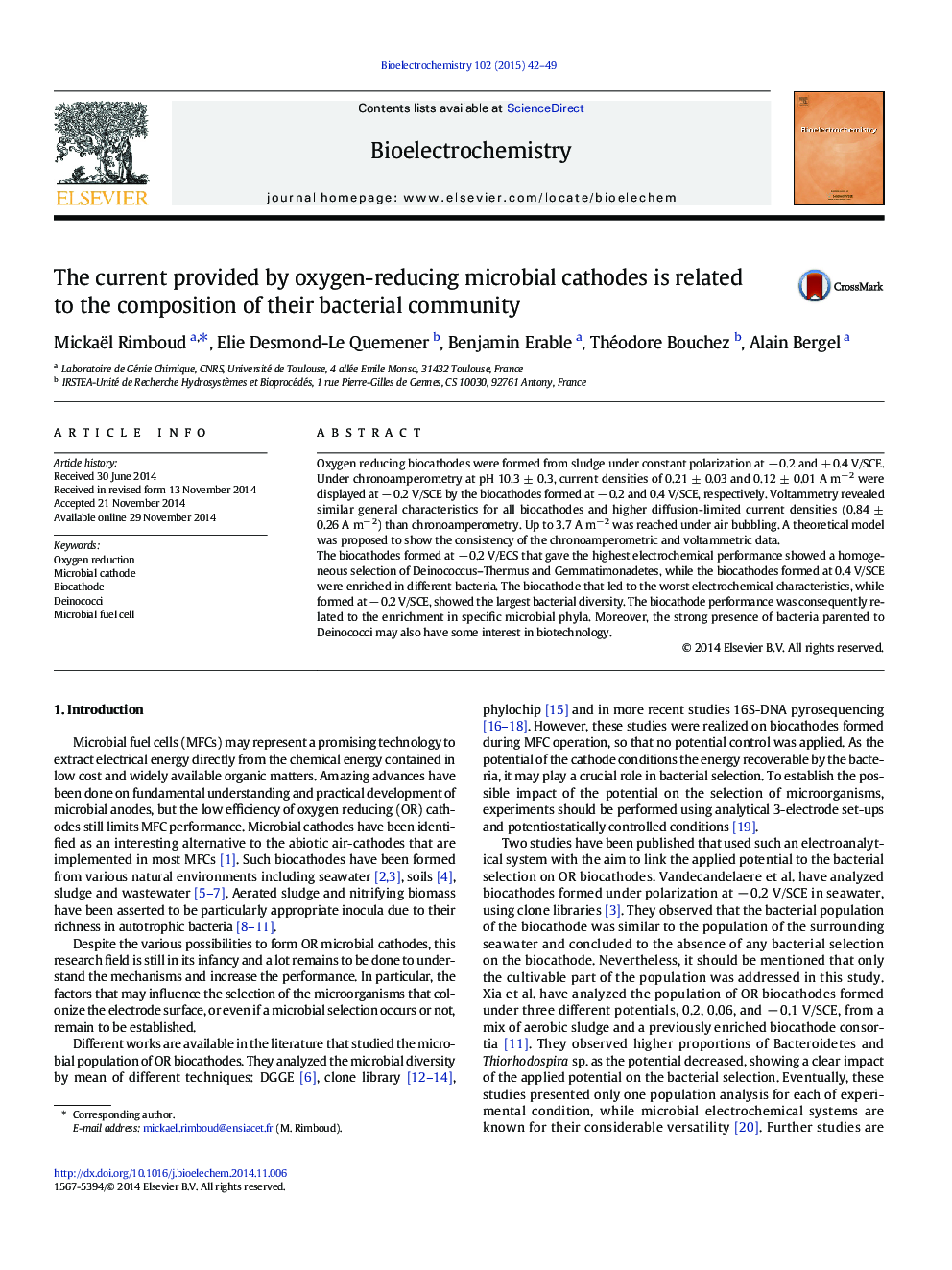| کد مقاله | کد نشریه | سال انتشار | مقاله انگلیسی | نسخه تمام متن |
|---|---|---|---|---|
| 1267180 | 1496910 | 2015 | 8 صفحه PDF | دانلود رایگان |
• Relation between selected bacterial communities and OR biocathode performances
• High current densities obtained at alkaline pH under air flow
• Different bacterial communities selected depending on the experimental conditions
• An unusual genus present in majority into the biofilms, Truepera (Deinococci).
Oxygen reducing biocathodes were formed from sludge under constant polarization at − 0.2 and + 0.4 V/SCE. Under chronoamperometry at pH 10.3 ± 0.3, current densities of 0.21 ± 0.03 and 0.12 ± 0.01 A m− 2 were displayed at − 0.2 V/SCE by the biocathodes formed at − 0.2 and 0.4 V/SCE, respectively. Voltammetry revealed similar general characteristics for all biocathodes and higher diffusion-limited current densities (0.84 ± 0.26 A m− 2) than chronoamperometry. Up to 3.7 A m− 2 was reached under air bubbling. A theoretical model was proposed to show the consistency of the chronoamperometric and voltammetric data.The biocathodes formed at − 0.2 V/ECS that gave the highest electrochemical performance showed a homogeneous selection of Deinococcus–Thermus and Gemmatimonadetes, while the biocathodes formed at 0.4 V/SCE were enriched in different bacteria. The biocathode that led to the worst electrochemical characteristics, while formed at − 0.2 V/SCE, showed the largest bacterial diversity. The biocathode performance was consequently related to the enrichment in specific microbial phyla. Moreover, the strong presence of bacteria parented to Deinococci may also have some interest in biotechnology.
Journal: Bioelectrochemistry - Volume 102, April 2015, Pages 42–49
